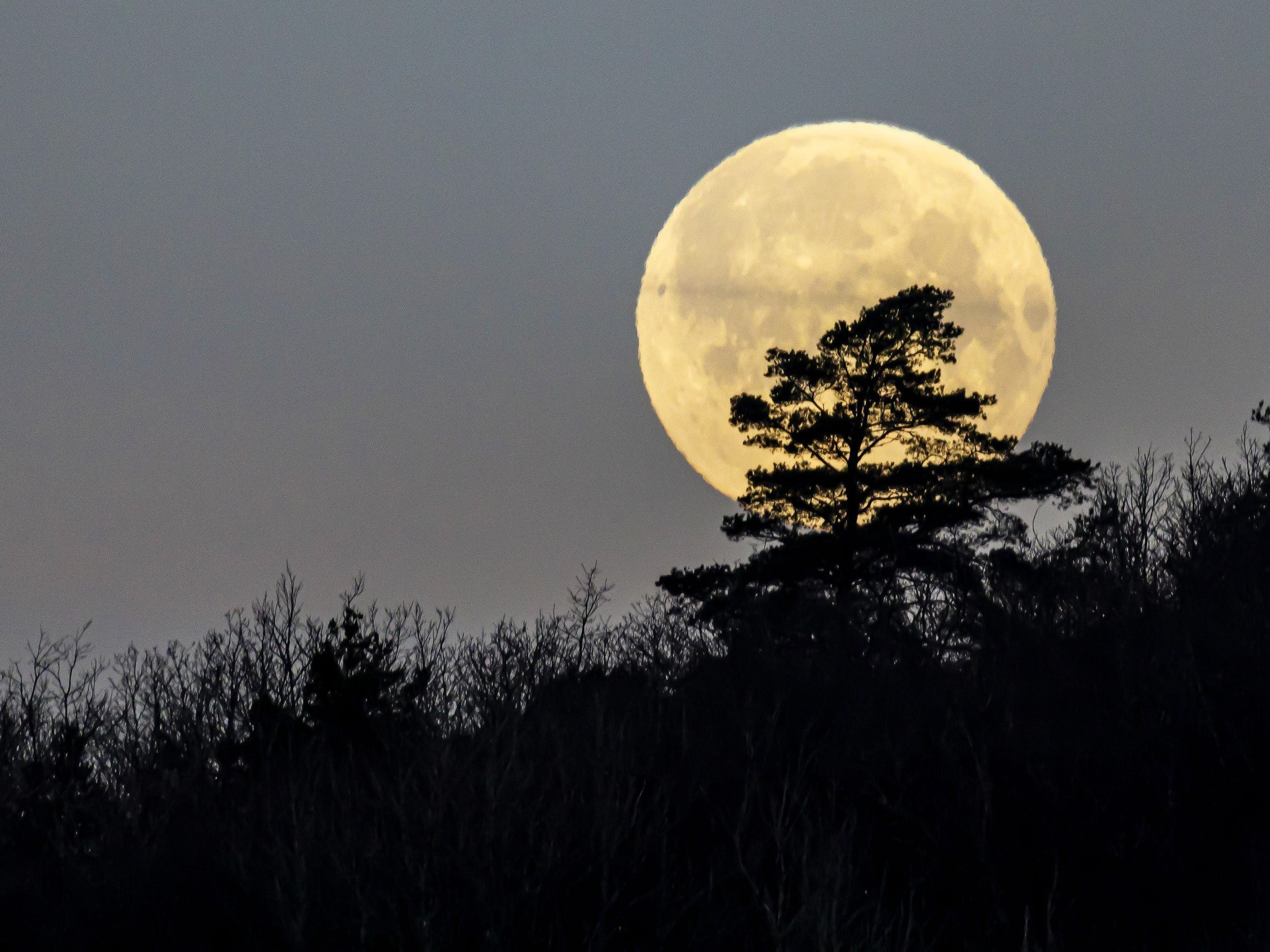Worm Moon: March full moon will be the biggest and brightest of 2023 so far
The Moon will appear at its fullest just after sunset on Tuesday

Your support helps us to tell the story
From reproductive rights to climate change to Big Tech, The Independent is on the ground when the story is developing. Whether it's investigating the financials of Elon Musk's pro-Trump PAC or producing our latest documentary, 'The A Word', which shines a light on the American women fighting for reproductive rights, we know how important it is to parse out the facts from the messaging.
At such a critical moment in US history, we need reporters on the ground. Your donation allows us to keep sending journalists to speak to both sides of the story.
The Independent is trusted by Americans across the entire political spectrum. And unlike many other quality news outlets, we choose not to lock Americans out of our reporting and analysis with paywalls. We believe quality journalism should be available to everyone, paid for by those who can afford it.
Your support makes all the difference.March’s full moon will peak this week, rising in the sky just after sunset on Tuesday.
Traditionally known as the Worm Moon, the full moon in March typically coincides with creatures appearing with the warming spring weather.
The name was given by colonial and Native Americans, with the “worm” referring to a type of beetle larvae that emerges from the thawing bark of trees.
The full moon in March peaks on 7 March at 12.40pm GMT, when the Moon is not actually visible in the sky. Sky gazers will need to wait until just before 6pm to see the moonrise, which takes place just as the Sun is setting.
This is when the Moon will be at its fullest and brightest, however it will continue to appear full to the casual observer for the following couple of nights.
The best time to see the Moon is when it is closest to the horizon, either just after it rises in the evening, or just before it sets in the early morning.
An effect called the Moon Illusion means it seems bigger when it is near the horizon, though even Nasa scientists are unable to fully explain why.
“Despite the fact that people have been observing this illusion for thousands of years, we still don’t have a rock-solid scientific explanation for it,” the US space agency wrote in a blog post.
“Perhaps trees, mountains, and buildings help to trick your brain into thinking the Moon is both closer and bigger than it is.”
This theory does not explain why astronauts also claim to have witnessed the Moon Illusion from the International Space Station (ISS), despite having no objects in the foreground to compare it to.
Weather forecasts from the Met Office suggest good viewing conditions across large parts of the UK and Ireland, with partial cloud cover obscuring only southern areas of both countries.
For those whose view is blocked, a live stream of the Full Worm Moon will be broadcast on the official YouTube page of the Virtual Telescope Project.
The next full moon, known as the Pink Moon, will take place on 6 April. The first supermoon of the year is set for 3 July, with two more due at the beginning and end of August.



Join our commenting forum
Join thought-provoking conversations, follow other Independent readers and see their replies
Comments